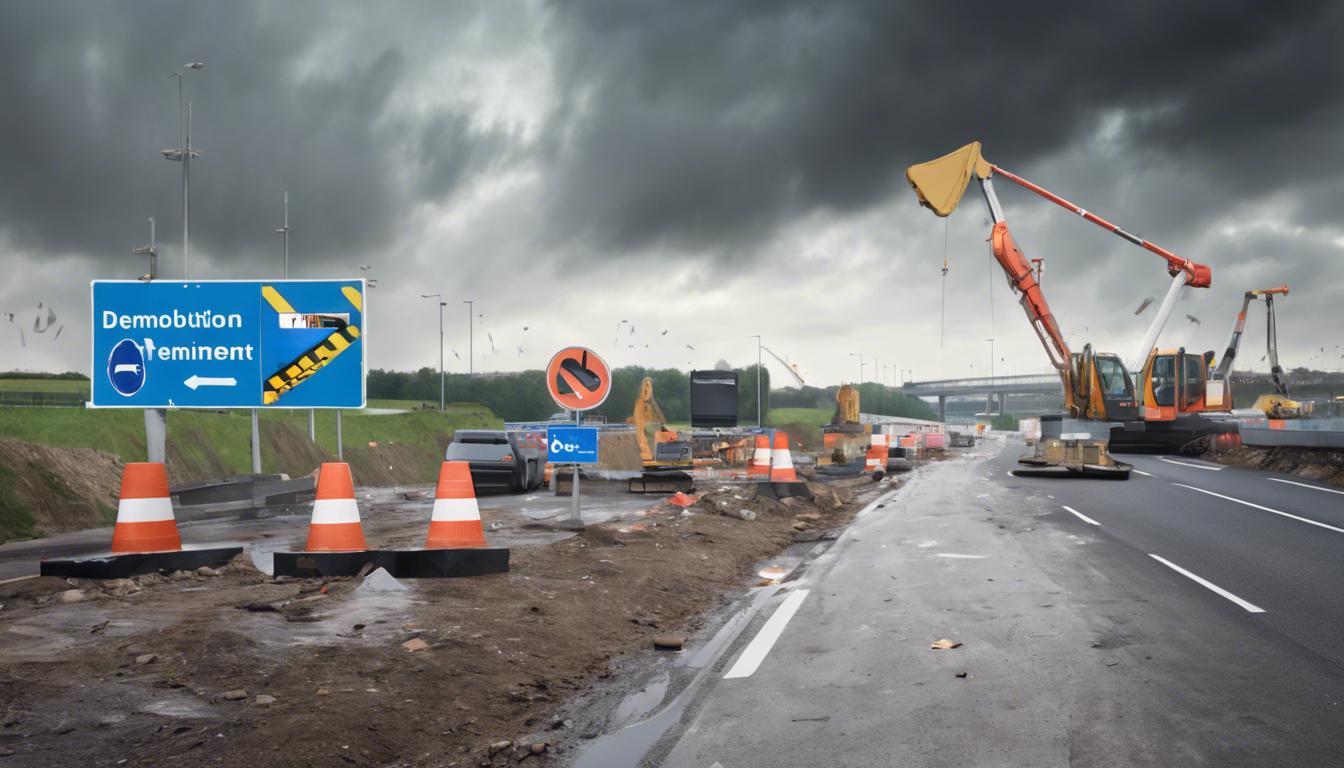Thousands of drivers faced significant delays as a section of the M25 was closed for bridge demolition, with local businesses and residents bracing for the economic fallout.
Over the weekend, thousands of drivers were confronted with significant disruptions as a five-mile stretch of the M25 in Surrey, between junctions 10 and 11, was closed for bridge demolition and gantry installation. This closure, part of a larger project to enhance safety and increase lane numbers at junction 10, marked the first planned daytime shutdown of Britain’s busiest motorway since its inauguration in 1986. Scheduled to last from Friday at 9 pm until Monday at 6 am, the project is anticipated to be completed by summer 2025.
The closure set off concerns over extensive traffic jams, with National Highways cautioning against an estimated five-hour delay if motorists did not adhere to mitigation measures. Drivers were advised to follow designated diversion routes via the A3, A245, and A320 to avoid exacerbating congestion. Local establishments, including St Peter’s Hospital in Chertsey, advised limiting travel to essential needs, reflecting the disruption’s wide-reaching impact on the community. Businesses along the diversion route faced economic pressures, with some reporting anticipated revenue losses due to decreased customer foot traffic.
Authorities underscored the importance of sticking to official diversions instead of relying on satellite navigation systems, to minimize the closure’s impact on local roads and communities. The closure, which disrupted daily routines and postponed local events like school sports, drew mixed reactions from local residents and businesses. Some, like The Black Prince pub relying on a local client base, were less affected, while others, foreseeing significant downturns, voiced frustration.
In response to the logistical and economic challenges posed by the weekend closure, there have been calls for National Highways to work closely with local authorities in planning future closures to mitigate traffic impacts and support affected communities and businesses. This ongoing project and the strategy for addressing its challenges underscore the complexities of managing infrastructure improvements on the UK’s crucial motorway networks.













